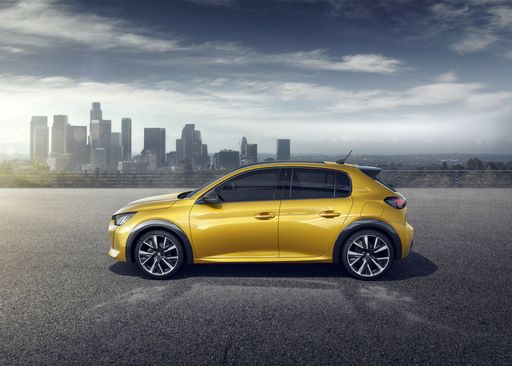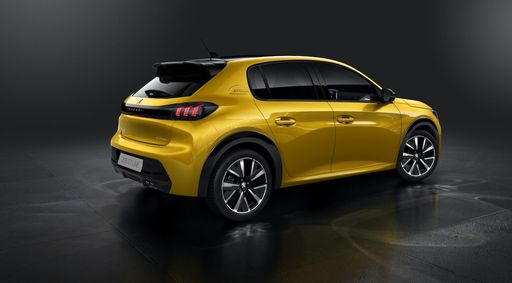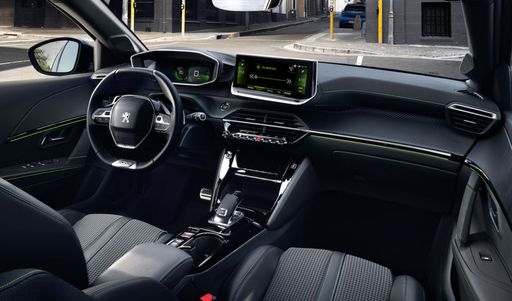Peugeot 208 vs Nissan Micra - Differences and prices compared
Costs and Efficiency:
Looking at overall running costs, both models reveal some interesting differences in everyday economy.
Peugeot 208 has a a bit advantage in terms of price – it starts at 20700 £, while the Nissan Micra costs 24000 £. That’s a price difference of around 3309 £.
In terms of energy consumption, the advantage goes to the Peugeot 208: with 14.10 kWh per 100 km, it’s minimal more efficient than the Nissan Micra with 14.20 kWh. That’s a difference of about 0.10 kWh.
As for range, the Peugeot 208 performs minimal better – achieving up to 432 km, about 16 km more than the Nissan Micra.
Engine and Performance:
Power, torque and acceleration say a lot about how a car feels on the road. This is where you see which model delivers more driving dynamics.
When it comes to engine power, the Peugeot 208 has a barely noticeable edge – offering 156 HP compared to 150 HP. That’s roughly 6 HP more horsepower.
In acceleration from 0 to 100 km/h, the Nissan Micra is hardly perceptible quicker – completing the sprint in 8 s, while the Peugeot 208 takes 8.30 s. That’s about 0.30 s faster.
In terms of top speed, the Peugeot 208 performs noticeable better – reaching 200 km/h, while the Nissan Micra tops out at 150 km/h. The difference is around 50 km/h.
There’s also a difference in torque: Peugeot 208 pulls minimal stronger with 270 Nm compared to 245 Nm. That’s about 25 Nm difference.
Space and Everyday Use:
Beyond pure performance, interior space and usability matter most in daily life. This is where you see which car is more practical and versatile.
Seats: offers more seating capacity – vs .
In curb weight, Peugeot 208 is distinct lighter – 1165 kg compared to 1452 kg. The difference is around 287 kg.
In terms of boot space, the Peugeot 208 offers minimal more room – 352 L compared to 326 L. That’s a difference of about 26 L.
In maximum load capacity, the Peugeot 208 performs hardly perceptible better – up to 1163 L, which is about 57 L more than the Nissan Micra.
When it comes to payload, Peugeot 208 hardly perceptible takes the win – 430 kg compared to 408 kg. That’s a difference of about 22 kg.
Who comes out on top?
Overall, the Peugeot 208 shows itself to be leaves the rival little chance and secures the title of DriveDuel Champion.
It convinces with the more balanced overall package and proves to be the more versatile choice for everyday use.
 @ Peugeot / Stellantis Media
@ Peugeot / Stellantis Media
Peugeot 208
Costs and Consumption
View detailed analysis
Engine and Performance
View detailed analysis
Dimensions and Body
View detailed analysis
Peugeot 208
The Peugeot 208 feels like a city-savvy fox: compact, stylish and surprisingly grown-up, with a cabin that punches above its weight and enough personality to make daily commutes a little less boring. It’s a smart pick for buyers who want chic practicality without the showroom bluster — easy to park, thrifty to run and oddly fun when the road tightens up.
details @ Peugeot / Stellantis Media
@ Peugeot / Stellantis Media
 @ Peugeot / Stellantis Media
@ Peugeot / Stellantis Media
 @ Peugeot / Stellantis Media
@ Peugeot / Stellantis Media
 @ Peugeot / Stellantis Media
@ Peugeot / Stellantis Media
Nissan Micra
The Nissan Micra is a compact hatchback renowned for its agile handling and city-friendly dimensions. With a design that blends sleek curves with a practical layout, it appeals to urban drivers who value style and efficiency. Inside, the car offers a surprising amount of room and useful tech features, making it both a convenient and comfortable ride for daily commutes.
details
 @ Peugeot / Stellantis Media
@ Peugeot / Stellantis Media
|
|
|
|
|
Costs and Consumption |
|
|---|---|
|
Price
20700 - 35200 £
|
Price
24000 - 29900 £
|
|
Consumption L/100km
4.5 - 5.2 L
|
Consumption L/100km
-
|
|
Consumption kWh/100km
14.1 - 15.4 kWh
|
Consumption kWh/100km
14.2 - 14.7 kWh
|
|
Electric Range
362 - 432 km
|
Electric Range
317 - 416 km
|
|
Battery Capacity
46 - 51 kWh
|
Battery Capacity
40 - 52 kWh
|
|
co2
0 - 117 g/km
|
co2
0 g/km
|
|
Fuel tank capacity
44 L
|
Fuel tank capacity
-
|
Dimensions and Body |
|
|---|---|
|
Body Type
Hatchback
|
Body Type
Hatchback
|
|
Seats
5
|
Seats
5
|
|
Doors
5
|
Doors
5
|
|
Curb weight
1165 - 1530 kg
|
Curb weight
1452 - 1527 kg
|
|
Trunk capacity
309 - 352 L
|
Trunk capacity
326 L
|
|
Length
4055 mm
|
Length
3974 mm
|
|
Width
1745 mm
|
Width
1774 mm
|
|
Height
1430 mm
|
Height
1490 mm
|
|
Max trunk capacity
1118 - 1163 L
|
Max trunk capacity
1106 L
|
|
Payload
380 - 430 kg
|
Payload
403 - 408 kg
|
Engine and Performance |
|
|---|---|
|
Engine Type
Petrol, Electric, Petrol MHEV
|
Engine Type
Electric
|
|
Transmission
Manuel, Automatic
|
Transmission
Automatic
|
|
Transmission Detail
Manual Gearbox, Reduction Gearbox, Dual-Clutch Automatic
|
Transmission Detail
Reduction Gearbox
|
|
Drive Type
Front-Wheel Drive
|
Drive Type
Front-Wheel Drive
|
|
Power HP
101 - 156 HP
|
Power HP
122 - 150 HP
|
|
Acceleration 0-100km/h
8.3 - 10.9 s
|
Acceleration 0-100km/h
8 - 9 s
|
|
Max Speed
150 - 200 km/h
|
Max Speed
150 km/h
|
|
Torque
205 - 270 Nm
|
Torque
225 - 245 Nm
|
|
Number of Cylinders
3
|
Number of Cylinders
-
|
|
Power kW
74 - 115 kW
|
Power kW
90 - 110 kW
|
|
Engine capacity
1199 cm3
|
Engine capacity
-
|
General |
|
|---|---|
|
Model Year
2023 - 2025
|
Model Year
2026
|
|
CO2 Efficiency Class
D, A, C
|
CO2 Efficiency Class
A
|
|
Brand
Peugeot
|
Brand
Nissan
|
What drive types are available for the Peugeot 208?
The Peugeot 208 is offered with Front-Wheel Drive.
The prices and data displayed are estimates based on German list prices and may vary by country. This information is not legally binding.
